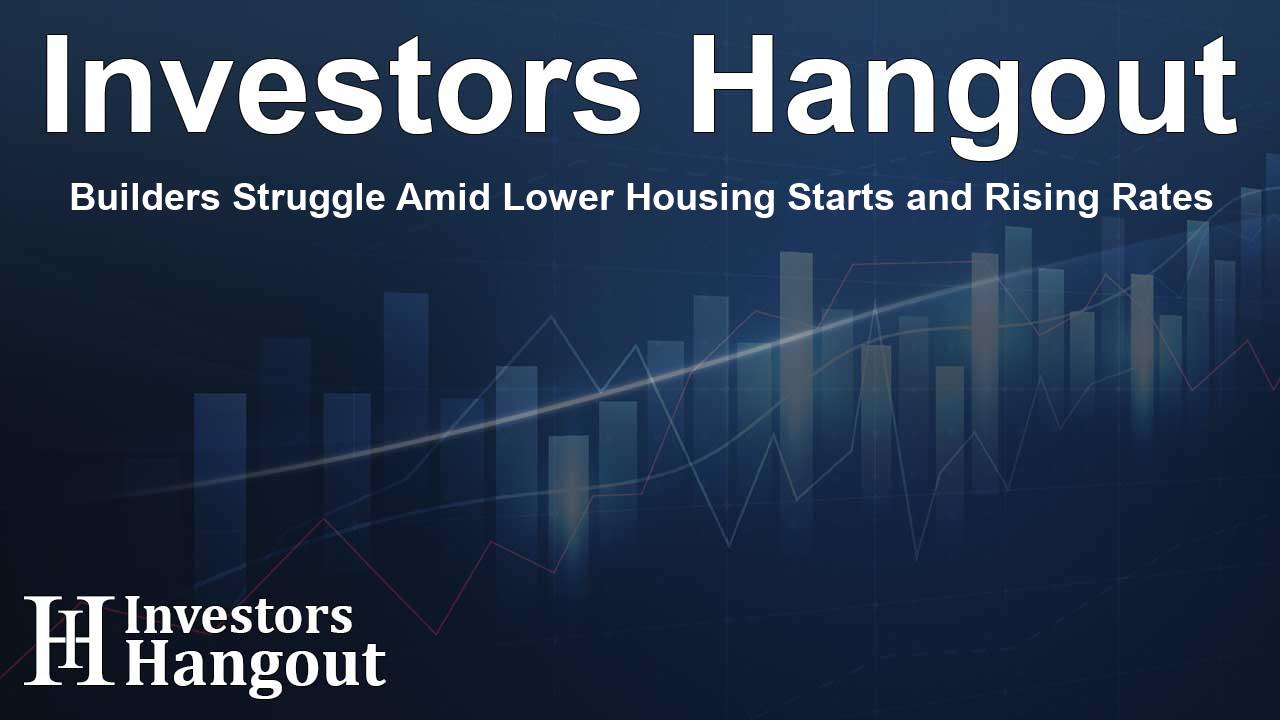Builders Struggle Amid Lower Housing Starts and Rising Rates

Understanding the Current Housing Market Landscape
The ongoing disconnect between policymakers' housing aspirations and the grim market realities is becoming increasingly apparent. October’s housing starts and permits have dropped to recession-level figures, even though there are widespread calls for increased construction. This paradox illustrates the growing challenges builders face amidst rising interest rates and stagnant demand.
Recent Trends in Housing Data
According to the latest data from the Census Bureau, housing starts fell by 3.1% compared to September's revised estimate, landing at a seasonally adjusted annual rate of 1,311,000 units. Building permits also declined by 0.6% from the previous month, resulting in a significant 7.7% drop compared to the same period last year.
The Reality of Demand for Housing
This decline in construction activity stands in stark contrast to comments made by Federal Reserve officials, including Minneapolis Fed President Neel Kashkari. He suggested that housing demand remains strong enough to justify higher mortgage rates, but the data tells a different story. Existing home sales have seen a record low level for the third consecutive year when adjusted for workforce size.
Industry Insights on Builder Behavior
Builder optimism plays a crucial role in interpreting market conditions. Reports indicate that construction companies exhibit increased confidence when mortgage rates hover around 6%. However, this optimism quickly dissipates as rates climb to between 6.75% and 7.5%. The ramifications extend beyond single-family homes, affecting multiunit project permits that are currently at recession levels.
Interest Rate Sensitivity Among Builders
The housing market’s sensitivity to interest rates is evident during brief periods of improved builder confidence. These improvements occurred when mortgage rates dipped temporarily from 7.5% to 6%. Builders have the option to boost sales through rate buydowns, but maintaining rates in the low 6% range has proven to be a significant challenge.
Looking Forward: Challenges Ahead
As we look ahead, the path to increased housing construction remains riddled with challenges. Although lower Federal Reserve rates could theoretically support land purchases and facilitate apartment construction, these developments typically require extensive lead times. The ongoing construction slowdown could potentially exacerbate rent inflation as supply constraints continue to affect the market.
Market Predictions and Future Sales
Sales of new homes currently lag behind levels seen during the 2001 tech recession, signaling severe market conditions. This situation sharply contrasts with the optimistic predictions made in 2021 that anticipated a decade-long construction boom.
Need for Stabilized Mortgage Rates
According to industry experts, significant construction growth appears unlikely until mortgage rates stabilize at lower levels. While the economy continues to expand, Fed policies may limit how much rates can decrease. However, even a sustained move towards 6% could reignite building activity. As Logan Mohtashami, a mortgage and housing ecosystem expert, succinctly states, "millions of homes will stay unbuilt" if these conditions do not change.
Frequently Asked Questions
What are the current housing start trends?
Housing starts have recently dropped to recession-level figures, with a 3.1% decrease from the previous month.
Why are builders pulling back on construction?
Builders tend to pull back on construction when mortgage rates rise beyond 6.75%, as this impacts their confidence in the market.
How do interest rates influence the housing market?
Higher interest rates tend to decrease builder confidence and can lead to a slower rate of new home construction.
What role does Federal policy play in housing construction?
Federal Reserve policies can affect mortgage rates, influencing overall demand and the feasibility of new housing projects.
What is the outlook for the future of housing?
The outlook remains uncertain, with millions of homes likely to stay unbuilt unless mortgage rates stabilize at a lower level.
About Investors Hangout
Investors Hangout is a leading online stock forum for financial discussion and learning, offering a wide range of free tools and resources. It draws in traders of all levels, who exchange market knowledge, investigate trading tactics, and keep an eye on industry developments in real time. Featuring financial articles, stock message boards, quotes, charts, company profiles, and live news updates. Through cooperative learning and a wealth of informational resources, it helps users from novices creating their first portfolios to experts honing their techniques. Join Investors Hangout today: https://investorshangout.com/
Disclaimer: The content of this article is solely for general informational purposes only; it does not represent legal, financial, or investment advice. Investors Hangout does not offer financial advice; the author is not a licensed financial advisor. Consult a qualified advisor before making any financial or investment decisions based on this article. The author's interpretation of publicly available data shapes the opinions presented here; as a result, they should not be taken as advice to purchase, sell, or hold any securities mentioned or any other investments. The author does not guarantee the accuracy, completeness, or timeliness of any material, providing it "as is." Information and market conditions may change; past performance is not indicative of future outcomes. If any of the material offered here is inaccurate, please contact us for corrections.